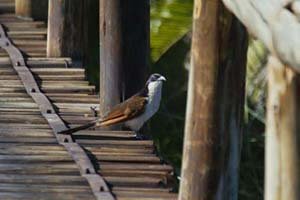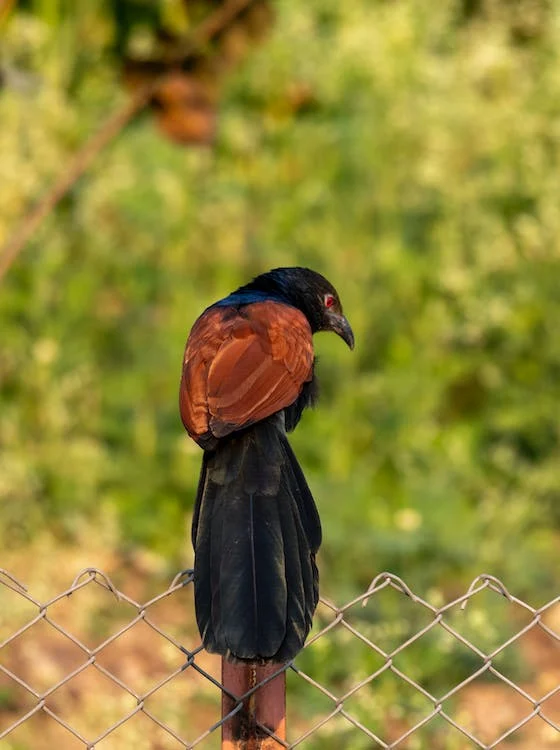It is a large coucal with a huge bill, and a distinct copper-colored tail, where it got its name. Thrives in dense waterside vegetation, such as in swamps, wetlands, vleis, and flooded plains. It is conspicuous in flight due to its massive size. Relatively timid, may occasionally go out in the open. Typical call is characterized by slow, hollow “boop” notes.
Read further to know more about the Coppery-tailed Coucal.
What is a Coppery-tailed Coucal?
Coppery-tailed Coucal is cuckoo species belonging to family Cuculudae. It is native to south-central Africa, occurring in Angola, Botswana, DR Congo, Namibia, Malawi, Tanzania, Zimbabwe, and Zambia. It resembles the Blue-headed Coucal, but it is relatively larger and lacks the blue gleam on the head. Anton Reichenow, a German ornithologist, first described the species in 1896.
Its seven levels of classification are as follows:
Kingdom: Animalia
Phylum: Chordata
Class: Aves
Order: Cuculiformes
Family: Cuculidae
Genus: Centropus
Species: C. cupreicaudus
Coppery-tailed Coucal Physical Description
Coppery-tailed Coucal is a large cuckoo species, growing about 19 to 19.6 inches or 48 to 50 centimeters. It has a black head and upperparts, white to cream underparts, a brownish rump and tail with a coppery-luster, where the species gots its name. The bill is black and curved. Eyes are red with black irises. Both sexes look similar, but females are slightly larger than the males. Meanwhile, juveniles and immature birds have dull-streaked on the head and barred flight feathers.
Where can they be spotted?
Coppery-tailed Coucals are native to some areas of south-central Africa, occurring from Angola to Botswana, DR Congo, Namibia, Malawi, Tanzania, Zimbabwe, and Zambia. These birds thrive in swamplands, with lush waterside vegetation. It also occurs in wetlands, vleis, seasonal lakes, and flooded plains.
Interesting Facts You Should Know About the Coppery-tailed Coucal
Coppery-tailed Coucals feeds on small reptiles, such as geckos, lizards, and snakes. It strikes that latter with deadly blows killing them almost instantly. They also hunt smaller birds while on the wings, using its sharp claws to break their prey’s neck.
Otherwise, they attack them on the ground or in their nest. Other food items it consumes include mice, rodents, rabbits, bees, wasps, grasshoppers, locusts, snails, fish, and crabs. They are mostly active in the evening until after dawn.
Coppery-tailed Coucals are believed to be monogamous, with their breeding season taking place from January to March. Both sexes build the domed nest, but males do more of the work. Nest materials used are reeds, twigs, and grasses, while the interior is lined with finer leaves. They place the nest among dense waterside vegetations or tangles or grasses and reeds.
The female Coppery-tailed Coucals will lay a clutch of 2 to 4 eggs. Often, the first egg is laid even before the nest construction has finished. Eggs hatch in intervals. Both parents tend to chicks, which will soon fledge after approximately 17 days.
WILDLIFE PARKS AND RESERVES WHERE THIS SPECIES IS FOUND:
BOTSWANA
NAMIBIA
ZAMBIA
ZIMBABWE
BOTSWANA BIRDS | SOUTH AFRICA BIRDS
NAMIBIA BIRDS | ZAMBIA BIRDS | ZIMBABWE BIRDS


